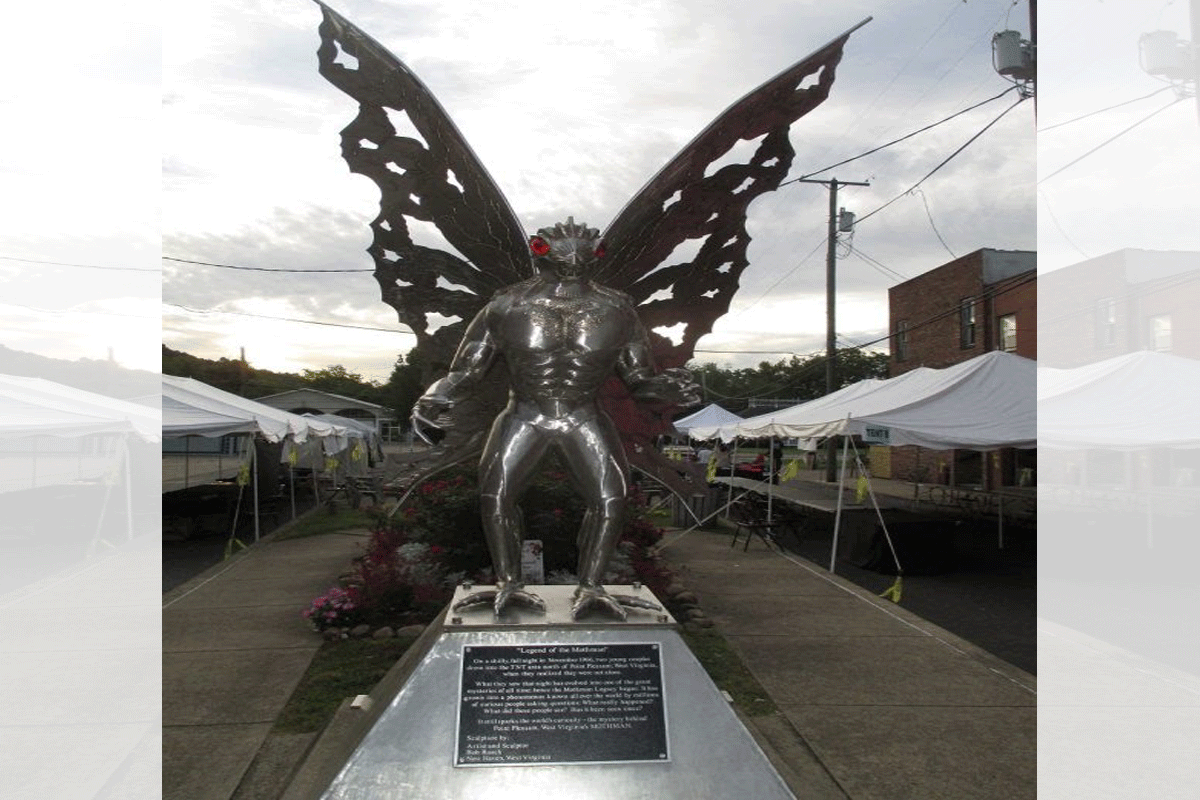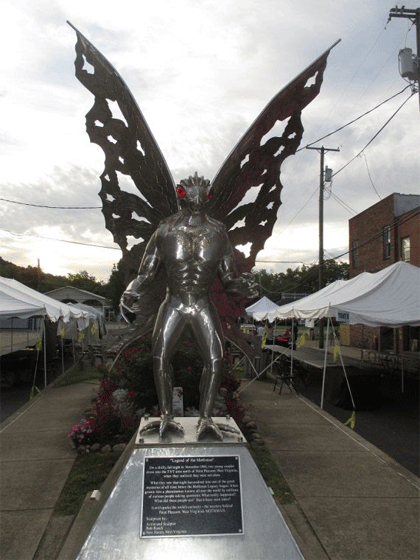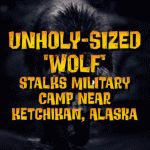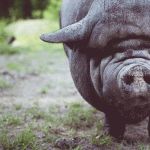
A Catalog of Creepy Flying Monsters: Mothman Isn’t Anywhere Near Alone
Nick Redfern October 22, 2021
My previous article was on the subject of just how many unknown apes there might be in our world. The answer is this: there’s a lot of them! Bigfoot, the Yeti, and so on are far from being alone. With that in mind, I thought today that: why not write an article revealing some of the lesser-known monsters of the winged and flying types. Of course, the Mothman – that terrorized the people of Point Pleasant, West Virginia from 1966 to 1967 – is the most famous flying monster. As you’ll see now, though, there are many more. Africa is (or was) the domain of more than a few large, winged, flying monsters. A wealth of such stories comes from the Bokaonde and Kaonde tribes of Zambia. It’s largely thanks to an early 20th century explorer, Frank H. Melland, that we know of the accounts of these immense and fearsome fliers. Melland’s sources in the tribes told him that the most feared of all the monsters of the skies was the Kongamato. Its name means “over-whelmer [sic] of boats.” The name is a very apt one, since it had the habit of swooping down on canoes and savagely attacking and killing those within. It was a huge beast that lived in, and hunted in, the Jiundu swamps, and which deeply terrified the people of the area. As for the appearance of the Kongamato, it looked somewhat like a bird – at first glance. That it utterly lacked feathers, however, and the fact that its red body was leathery-looking, was membranous, and had wings far more befitting those of a bat, suggests it was something else entirely. Moreover, its immense mouth was filled with sharp teeth that could slice a man in two in an instant, which is not something typical of the average bird
 Point Pleasant, West Virginia
Point Pleasant, West Virginia
Moving on, how about Batsquatch? It’s a terrifying, malevolent, hair-covered humanoid that sports a pair of huge, gargoyle-like wings. It was a diabolical beast encountered by a young man on the night of Saturday, April 16, 1994. The location was southeast of Buckley, Washington State, and with Mount Rainier in the background. Interestingly, Mount Rainier has another strange and now-famous aerial mystery attached to it: it was over the mountain, on June 24, 1947, that a pilot named Kenneth Arnold encountered a squadron of strange, flying vehicles that, when the media got hold of the story, became famously known as flying saucers. Meanwhile, however, back to 1994. The man who became the unfortunate witness to the terrible beast was Brian Canfield, who, at the time in question, was driving his truck to Camp One, a settlement in the area, and which is situated near Lake Kapowsin. All was normal until Canfield’s headlights began to fade. That was bad enough. But, in mere moments, his engine completely quit and his vehicle silently coasted to a stop at the side of the road. All thoughts of what he should do, on a lonely stretch of Washington State road at around 9:30 p.m., went totally out of the window when an infernal monstrosity loomed into view. Canfield could only look on, terror-stricken, as a large, dark-colored humanoid descended from the black skies. It did so in a curious semi-gliding, semi-flying fashion, finally coming to rest right in front of his vehicle. Canfield was unable to move, such was his level of terror. All he could do was grip the steering wheel and stare in stark terror at the beast before him. Thankfully, the thing was soon gone. Now, let’s head out to the U.K.
One might be forgiven for thinking that sightings of large, winged monsters only ever occur in the skies over large forests and jungles, and above remote mountains. Not so. In fact, far from it. In 1984, just such an unearthly beast was seen soaring over the capital city of the United Kingdom: London! The specific location was Brentford, a town situated within west London. The day on which all hell broke loose was hardly of the kind one might expect to associate with a monster. There were no dark and stormy skies, no thunder and lightning, and no howling winds. Instead, there was nothing but a warm, pleasant, sunny day in March. The man who kicked off the firestorm of controversy was Kevin Chippendale, who, at the time, was walking along Brentford’s Braemer Road. As he did so, Chippendale’s attention was drawn to something strange in the sky. It was some sort of large, flying animal. Not the kind of thing you see every day, to be sure. And in a decidedly synchronistic fashion, it all went down in the skies directly above a local pub called The Griffin. It was the imagery of a legendary griffin of ancient mythology that Chippendale most associated with the thing he briefly encountered. It was winged, fork-tailed, and sported mean-looking talons and a dog-like muzzle. Chippendale could do nothing but stare in awe. And in shock and terror, too. Now, what about a pterodactyl?
Imagine driving, late at night, across the foggy moors of central England and coming across what looks like nothing less than a living, breathing pterodactyl! Think it couldn’t happen? It already has. From 1982 to 1983, a wave of sightings of such a creature – presumed extinct for 65 million years – occurred in an area called the Pennines, better known as the “backbone of England” and comprised of rolling hills and mountains. So far as can be determined, the first encounter occurred at a place with the highly apt name of the Devil’s Punchbowl, on September 12, 1982. That was when a man named William Green came forward with an astonishing story of what he encountered at Shipley Glen woods. It was a large, grey colored creature, that flew in “haphazard” style and which possessed a pair of large, leathery-looking wings. The latter point is notable, since it effectively rules out a significantly sized feathery bird, and does indeed place matters into a pterodactyl category. Seventy-two hours later, a woman named Jean Schofield had the misfortune to see the immense beast at the West Yorkshire town of Yeadon. That the thing was heading for the Leeds/Bradford Airport provoked fears in Schofield’s mind of a catastrophic mid-air collision between a passenger plane and the mighty winged thing. Luckily, no-one was killed. Onto another affair…
 Puerto Rico, the home of the Moca Vampire
Puerto Rico, the home of the Moca Vampire
The controversy all began in late February 1975. That was when the population of Moca was plunged into a collective state of fear. And it was hardly surprising. Numerous ranchers reported how their farm animals were being violently slaughtered under cover of darkness and systematically drained of massive amounts of blood. The first area targeted was the Barrio Rocha region, where several goats, at least four pigs, numerous chickens, and more than a dozen cows, were all found dead, with puncture marks on their bodies, and deep claw-like wounds on their skin, and all missing one vital ingredient: blood. Villagers and farmers were as outraged as they were terrified. Local authorities, and chiefly the police, tried to diffuse the controversy by attributing the attacks to nothing stranger than the work of packs of wild dogs – a theory that, almost inevitably, was received with nothing but scorn, skepticism, and disdain.
By the end of the first week in March 1975, the death count was close to three dozen. It was in this same week that an important development was made: the blood-sucking culprit was finally seen, up close and personal, so to speak. The witness was a woman named Maria Acevedo, who caught sight a monstrously-sized, screaming and screeching winged beast that landed atop her home, and which clambered about her zinc roof, making an almighty racket in the process. And it was clearly no normal bird: around four to five feet in height, it was described as being similar in appearance to a pterodactyl, a presumed-extinct, flying reptile of the Jurassic era. Whatever the true nature of the monster, it quickly took to the skies and vanished into the starry darkness.
MU*





















